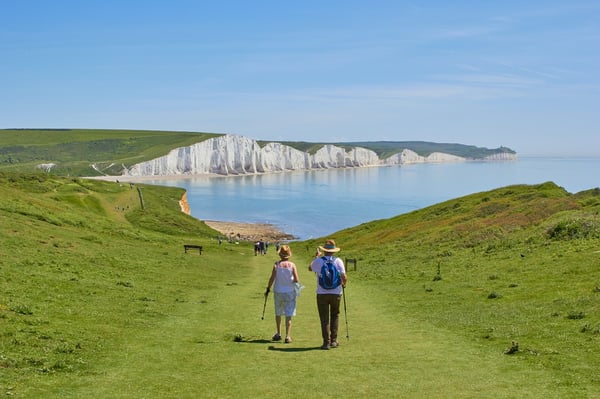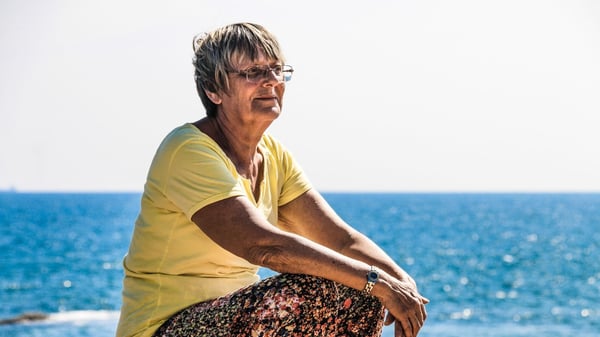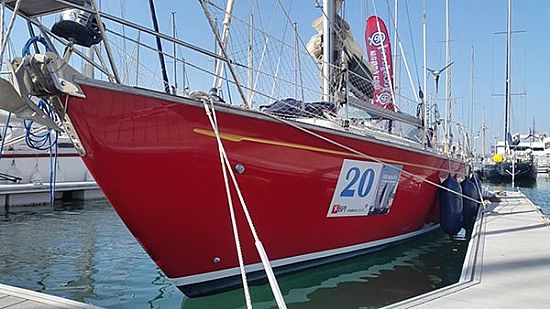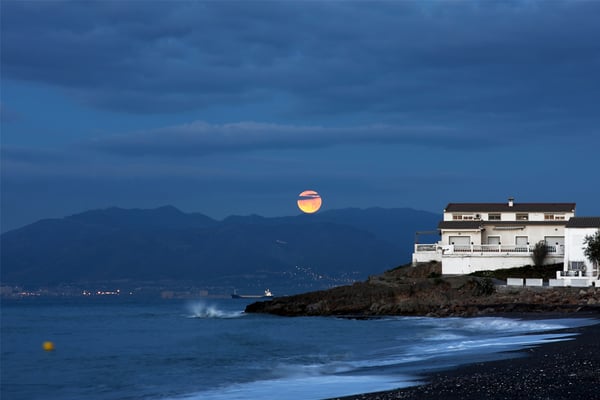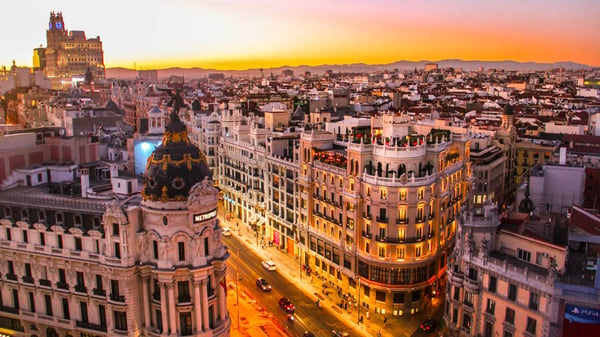For American citizens that dream of a retirement abroad, the options are limitless. Whether you want to spend your pension surrounded by sandy beaches, rolling green hills, or forest trekking, our best countries to retire for US citizens offer something for every passion.
If you plan to retire abroad, it’s a good idea to be aware of the cost of living, healthcare, climate, and US visa options in your dream destination.
It’s also good to be aware that CurrencyFair lets you send and receive money at exchange rates cheaper than the banks, saving you money when it’s time to transfer your pension or purchase property abroad.
10. Retiring to Ireland from the US

There's a massive Irish diaspora in the United States, and with around 31.5 million Americans claiming Irish ancestry, you could be one of the lucky many who are eligible for citizenship. If that’s not an option for you, there are other paths available to retire in Ireland.
Visa requirements: To retire in Ireland, you must be able to prove, using an Irish accountancy firm, that you’re independently wealthy and won’t be a burden on the state.
You need to have an income of €50,000 per year, or €100,000 combined if you’re applying as a couple, and access to a lump sum of money that'd cover the cost of a house or an apartment in Ireland.
While this amount isn’t specified, you should expect it to be anywhere in the region of €200,000 - €500,000 depending on where in the country you plan to retire. Check the Irish Citizens Information website and the Irish Immigration website for more information on the application process.
The road to retiring in Ireland is easier if your parents or grandparents were born there, making you eligible to apply for an Irish passport.
Healthcare: Ireland has both private and public health services. Once you can prove that you are “ordinarily resident” in Ireland, for example, with the proof of property purchase or rental, you're entitled to a range of public health services.
Public healthcare isn't completely free, but compared to the US system the subsidized fees are minimal. Most A&E (emergency room) visits will cost around $100, and visits to a GP (your primary care physician) will cost around $60.
However, the public healthcare system in Ireland is overbooked and has long waiting lists. You should also be aware that the more rural and affordable areas of Ireland also have less access to hospitals that might be required for anyone with a health condition that requires frequent checks. Many people in Ireland also opt for private healthcare.
Weather and climate: Ireland has a temperate climate, and you’ll rarely have to worry about extreme heat or cold. But you can expect plenty of rain — the country registers about 150 rain days a year, and that figure goes up to 225 days a year in the west of Ireland.
Cost of living: The cost of living in Ireland is high, and it’s one of the most expensive places to live in Europe. However, according to Numbeo, a cost of living database, it’s around 4.74% lower than in the United States in general. If you need to transfer savings to Ireland as part of your move, CurrencyFair offers fast, secure money transfers from the US.
9. Retiring to Thailand from the US

The warm climate, scenic beaches and tropical lifestyle make Thailand an attractive destination for US retirees. Its low cost of living means your pension funds can stretch further, although expats cite the genuine welcoming warmth and hospitality of the Thai locals as an even bigger advantage.
Visa requirements: To retire in Thailand, you’ll need to apply for a “retirement visa”, officially called a Non-Immigrant O-Long Stay Visa from within Thailand, or a Non-Immigrant OA-Long Stay Visa if you’re applying to retire in Thailand from the country you’re resident in.
The requirements are pretty simple. The main ones to be aware of are that you need to be over 50 years of age; have a monthly pension or income of at least ฿65,000; have a Thai bank account with at least ฿800,000; or have an annual income, pension, and money in a Thai bank, which combined comes to a total of at least ฿800,000. Check the CurrencyFair calculator to see how many Thai baht you could get for your US dollars.
The Thai embassy website has more information on the application process, and there are some other considerations to be aware of. For example, you cannot work while holding a Thai retirement visa.
Healthcare: Since 2019, retirees applying for the Non-Immigrant OA-Long Stay Visa must have valid health insurance for the duration of their stay. The health insurance policy must have:
-
A minimum of ฿40,000 for outpatient coverage.
-
A minimum of ฿400,000 for inpatient care.
Thailand has over 1,000 hospitals in its public sector, over 300 private hospitals, and over 25,000 private clinics. Private healthcare in Thailand is reported to be excellent, with sophisticated facilities and highly qualified staff.
Weather and climate: Thailand has a tropical climate, with a mean annual temperature of 82°F and highs around 100°F in April during the hot season, which lasts from March to mid-May. From mid-May to October, you’ll experience the rainy season, with the cool season lasting from November to February. Many expats choose to retire in the cooler, northern part of Vietnam, with Chiang Mai being particularly popular among US retirees.
Cost of living: The average cost of living in Thailand is 56.90% lower than in United States — and rent for a one bedroom apartment in the city centre is 78.64% cheaper. You should budget around $1,500 - $2,000 per month to live comfortably. If you can afford to budget even more, you could afford a luxurious lifestyle in Thailand.
8. Retiring in Uruguay from the US
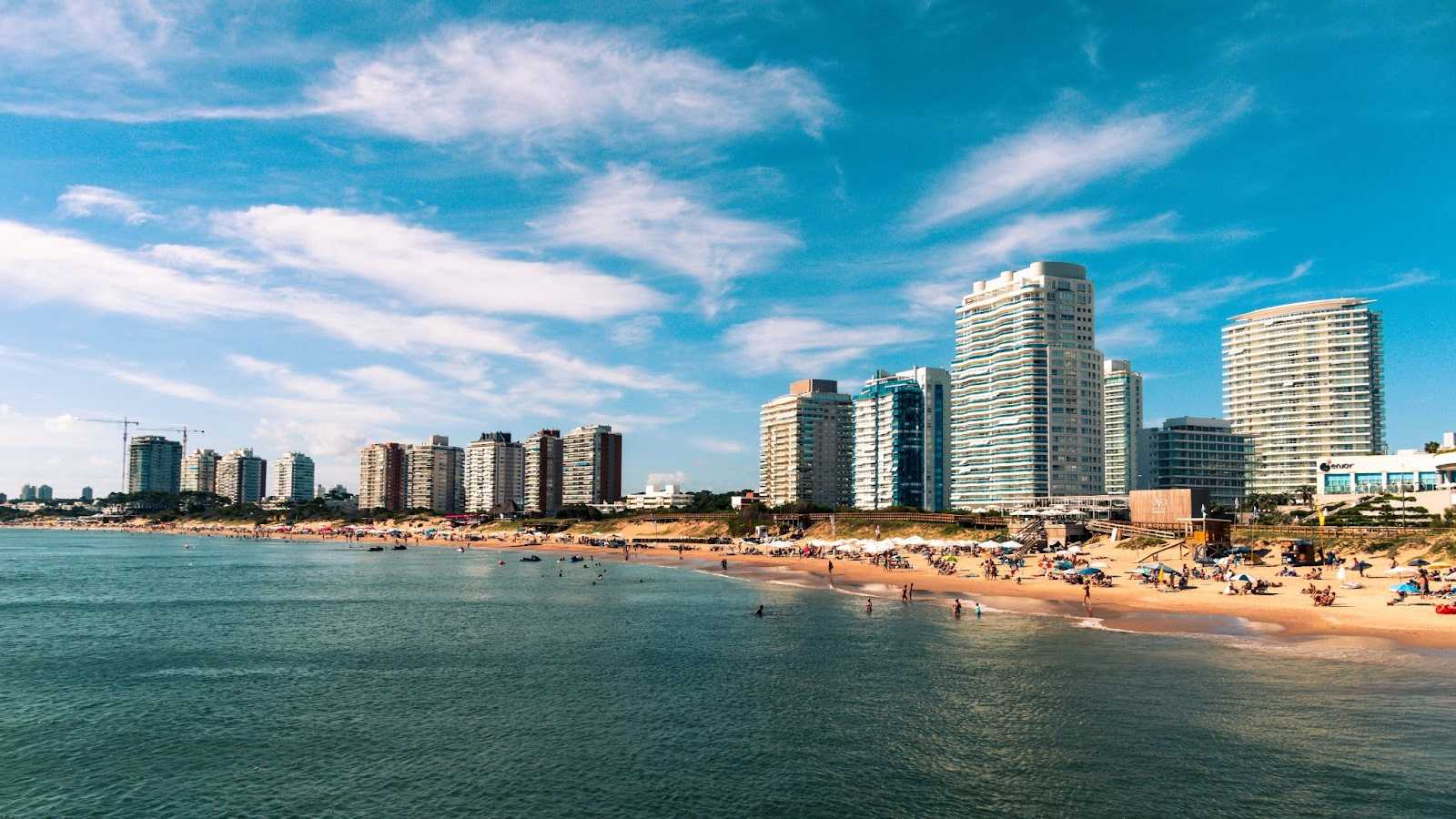
Uruguay is the second-smallest country in South America, with a population of just under 3.5mn people enjoying its softly rolling hills, mild weather, and quality healthcare. Brush up on your Spanish language skills and you could be living the good life just a 12-hour flight south of the US.
Visa requirements: Retirees from the US to Uruguay often opt for the pensioner (“pensionado”) visa. This allows you to obtain residency once you’re in the country, and to bring your vehicle to Uruguay duty-free. Learn more about the requirements, and other visa options available.
Healthcare: Hospitals in Uruguay offer “mutualistas”, an agreement directly with that hospital that acts similarly to an insurance policy. It's like a membership club; you pay a monthly fee that usually starts at around $60, with a small copayment when you visit a doctor or get a test. Uruguay’s public healthcare system, the Administration of State Health Services (ASSE) is also available to US retirees who become legal residents.
Weather and climate: Uruguay has a temperate climate, with mild weather and rainfall throughout the year. Temperatures range from 50–60°F from June to September, and 70–82°F from December to March.
Cost of living: Uruguay isn’t the cheapest country in South America to retire to, but the cost of living is still lower than in the US. You can live comfortably on around $1,300 - $2,700 per month, including rent and utilities.
7. Retiring to Spain from the US

Roughly 12% of Spain’s population is expatriated, attracted to the country’s cost of living, healthcare, and social connections. Not to mention a sunny climate, fantastic cuisine, and rich historical culture. These things combine to give US retirees an excellent quality of life in Spain.
Visa requirements: To retire to Spain, you’ll have to begin your visa application process from the US. Spain’s non-lucrative visa allows non-EU citizens to live in Spain, so long as they have sufficient funds to sustain themselves. This income can be from pensions, rents or dividends, as this visa doesn't allow the holder to work. Alternatively, you can apply for a golden visa if you can meet its investment requirements.
Healthcare: Spain has both public and private healthcare systems and frequently ranks in the top 10 for best healthcare in the world. For context, Spain was 8th in the Health Care Index’s list, with the US ranked 30th.
Expats are entitled to free state healthcare if they are living and working in Spain. As the non-lucrative visa doesn’t entitle you to work, you’ll need to provide proof of private health insurance when applying. Once you’ve been resident in Spain for over five years, you can apply for permanent residency, which will allow you to access free public healthcare.
Weather and climate: Spain’s climate is officially mild oceanic, with warm and sunny summers and mild, rainy winters. However, depending on where you choose to settle, you can expect everything from hot, semi-arid climates to alpine conditions in its mountainous regions. As of July 2022, heatwaves saw parts of the country reach 114°F, particularly in cities on the central plateau, like Madrid.
Cost of living: Your cost of living in Spain could be up to 40.48% lower than in the US, including the cost of rent. Groceries, dining out, rent and entertainment are just a few of the categories that work out cheaper. To check the exchange rate for transferring your US dollars to euros, and to see how much you could save by not using your bank, check CurrencyFair’s exchange rate calculator here.
6. Retiring to Malta from the US
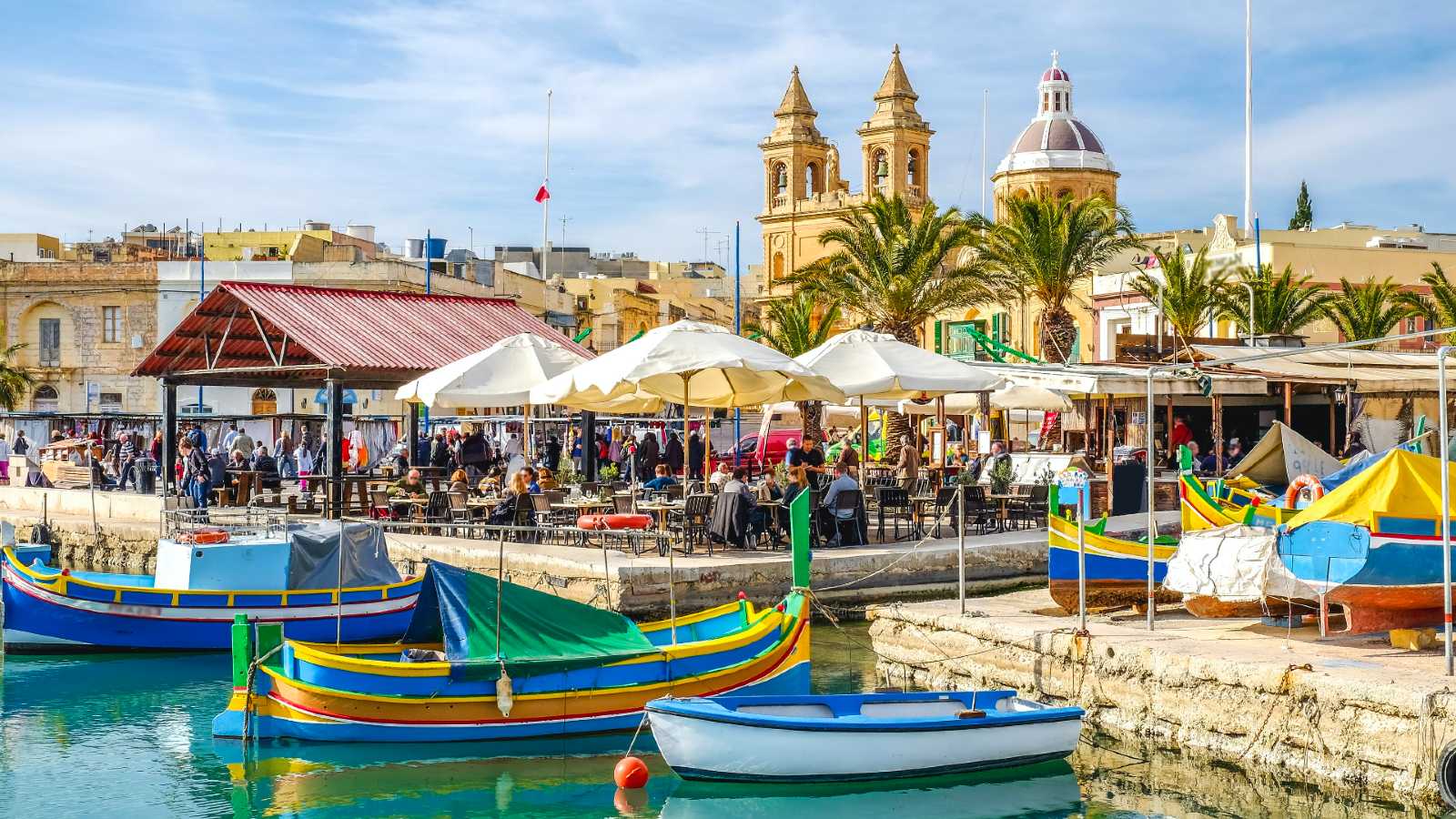
Malta is a hot spot for American retirees; this tiny, safe and beautiful Mediterranean island has a large American expat community to dive into. If you’re looking for a peaceful lifestyle surrounded by UNESCO World Heritage Sites, read on.
Visa requirements: Malta has a permanent residence visa that allows US (and all non-EU) nationals to live in Malta, provided you have a net worth of at least $395,127 or earn an annual income of at least $26,039.
American citizens who wish to retire in Malta can also apply for the “Citizenship by Investment Program”. There are other stipulations to the visa, but the three financial requirements for the Citizen by Investment Program state that applicants must:
-
Make a substantial real estate investment (for example, buying a property that’s at least valued at €300,000 in the south of Malta or €350,000 in the rest of Malta).
-
Make a non-refundable contribution of €28,000 if they’re purchasing a property or €58,000 if leasing or renting a property.
-
Donate €2,000 to a local NGO registered with the Commissioner of Voluntary Organizations.
To check the equivalent for those amounts in USD, and to see how much you could save by transferring funds with CurrencyFair, check out our exchange rate calculator here.
Healthcare: Malta has free public healthcare for any citizen who is working and contributing to the social security system that funds it. For non-EU citizens living in Malta, who aren’t contributing to social security payments, you must have a private health insurance policy. The good news is that the quality of healthcare is excellent, and far more affordable than in the US.
Weather and climate: Malta has a Mediterranean climate, with cool, mild winters and dry, sunny summers. Temperatures average at 60–90°F throughout the year.
Cost of living: Your cost of living in Malta could be up to 28.70% lower than in the US, including the cost of rent. You can live comfortably on around $1,400 - $2,000 per month, including rent and utilities.
5. Retiring to France from the US

For at least 150,000 Americans, France is home. Overall, 79% of expats who move to France are happy with their choice, and if you’re moving to the French countryside in particular, a whole new lifestyle beckons.
Visa requirements: US citizens will need to apply for a long-term French visa (visa long de séjour) and residence permit to retire to France. This visa can be applied for in your local embassy, and to extend your stay beyond the validity of your visa, you must apply for a residence permit at a prefecture in France. The French government’s “Visa Wizard” can help you select the right visa for your circumstances.
Healthcare: France has a hybrid healthcare system (“L’Assurance Maladie”) and it's generally considered one of the best in the world, with high-quality, affordable care and no long waiting lists, partially funded through the French tax system.
Since 2016, France has had a new national healthcare system, the “Protection Universelle Maladie” (PUMA). As a non-working retiree, you can register for the PUMA after you have lived in France in a “regular and stable manner” for more than three months.
Weather and climate: France’s climate is mostly temperate, but the country is divided into several “climate zones”, with an oceanic climate in the west; a continental climate in the east, Mediterranean in the south, and a maritime climate in the north.
Once you’ve arrived in the country, you can always trial living in different regions to find your placé de préférence before committing to buying a home.
Cost of living: Taking rent into account, the cost of living in France is 21.03% lower than in the US. One person can expect to live comfortably on around $867.41 without rent, and the rent for a one-bedroom apartment should cost you anywhere between $406.03-$1,421 monthly, depending on its size and location, according to Numbeo.
4. Retiring to Colombia from the US
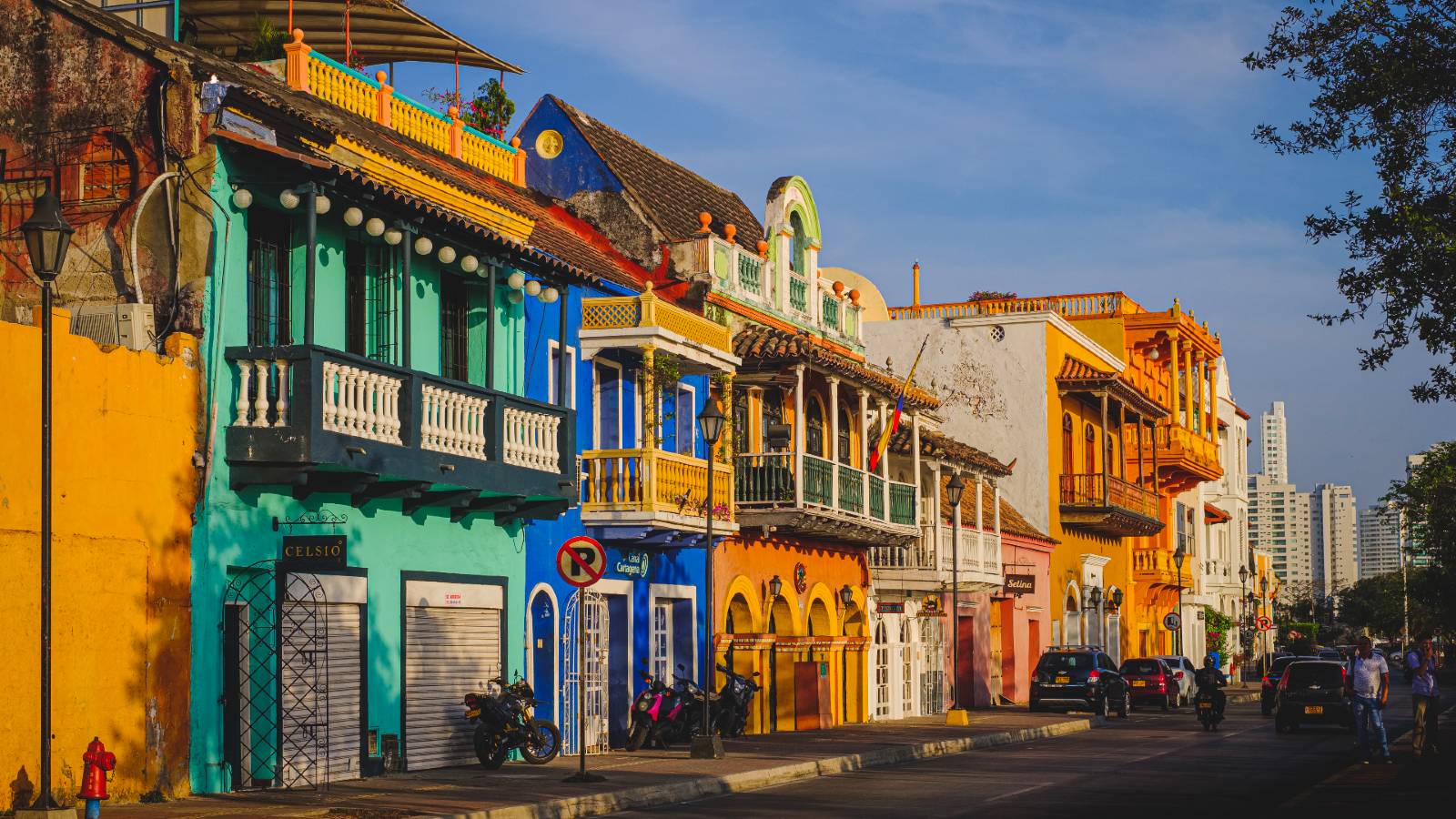
Colombia’s combination of mountains, sea and cities attracts American retirees looking for a retirement surrounded by rich biodiversity.
Visa requirements: US citizens have the option of applying for the Colombia retirement visa (Migrant (M) visa of category 11 or M-11) to retire there from the US. You’ll need to have proof of an income that's three times the minimum salary in Colombia, which is roughly $250 dollars per month as of July 2022.
Healthcare: Colombia’s public healthcare system operates a public insurance plan called “Entidades Promotoras de Salud” (EPS). EPS coverage is compulsory in Colombia, and requires a payment equal to 12% of your declared pension income, but many expats also opt for private insurance.
Weather and climate: The majority of Colombia experiences a warm and tropical climate, without clearly defined seasons. But thanks to the ranges of elevation across the country, you can expect varying climates based on the altitude.
Cost of living: Beside the stunning surroundings, one of the main benefits of living in Colombia is the low cost of living. According to Numbeo, one person’s estimated monthly costs in Colombia would be $362.36 without rent. The monthly rent for a one-bedroom apartment varies from $125.34-$447.63, and the country’s cost of living overall is 71.9% lower than that of the US.
3. Retiring to Portugal from the US
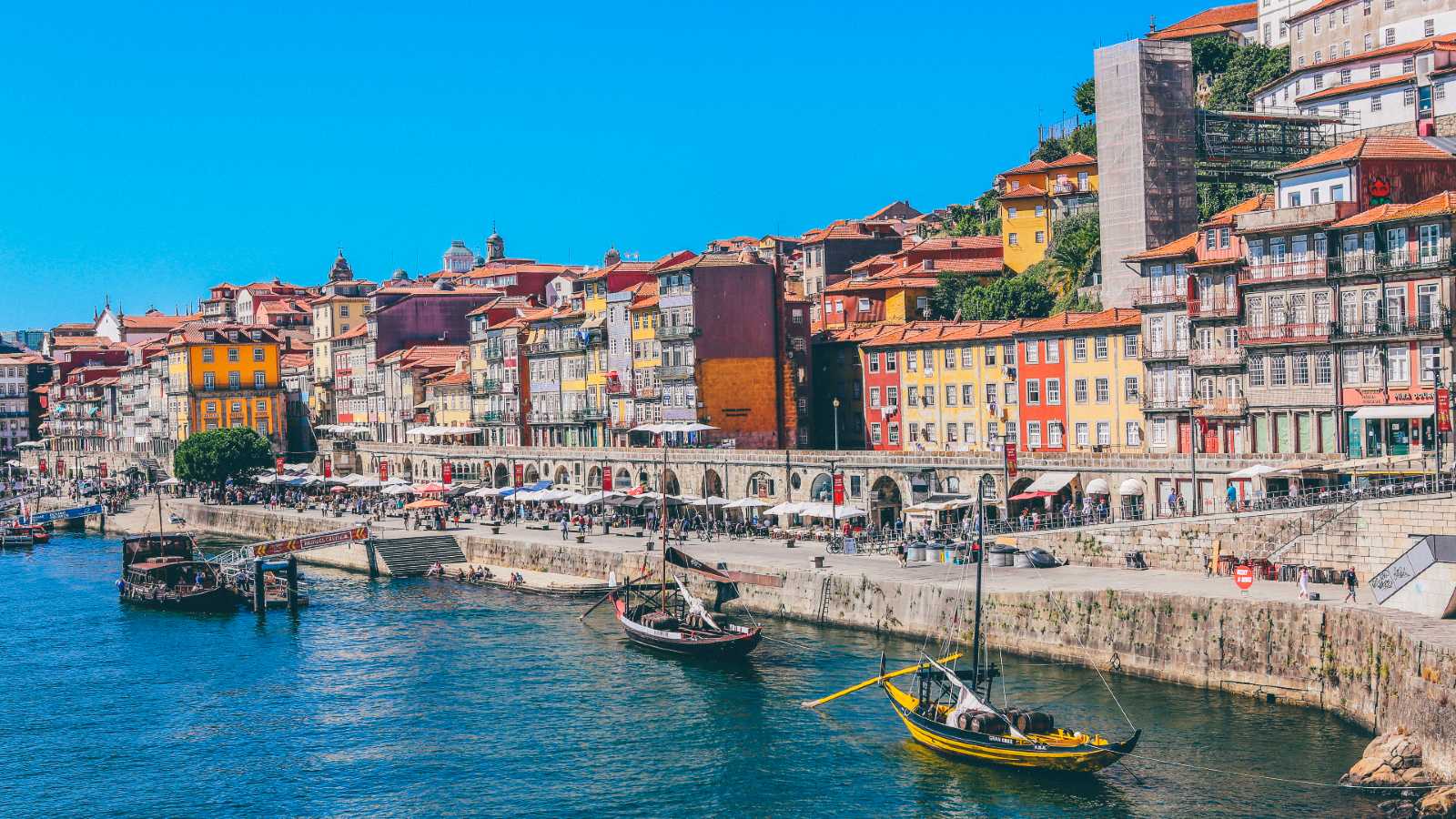
Portugal offers the best value for pensioners hoping to retire to Europe. The climate, affordable food, cheap accommodation, and rich culture are just some of the benefits American retirees love about living there.
Visa requirements: US citizens can apply for a residency visa from the Portuguese Embassy or a Portuguese Consulate in the US. The financial requirement for a residency visa, the type needed for anyone hoping to retire to Portugal, is based on the minimum monthly salary, which is €705 per month as of 2022.
This residency visa allows the holder to enter Portugal for four months, during which time they'll have to request a residency permit from the Immigration and Border Services (SEF) in Portugal. A residency permit is initially valid for one year, but it can be renewed twice more every two years for a total of five years. After five years, you can apply for permanent residency in Portugal.
Healthcare: Portugal's public national healthcare service (“Serviço Nacional de Saúde”) is available to all residents and citizens, including expat retirees. To access the national medical system, you'll need a Portuguese tax number (“número de contribuinte”) from your local tax department once you’re in Portugal, and a user’s card with a user’s number (“número de utente”) from your nearest Health Center. While wait times can be long, the fees are heavily subsidized — a trip to your family physician or the ER ranges from just $6 to $22.
Weather and climate: Portugal has a generally mild and Mediterranean climate, but the weather does vary between its five climate regions. The north of the country has a cool and rainy climate, and the further south you go the warmer and sunnier it will become. The far south of the Algarve has a dry and sunny microclimate.
Cost of living: Portugal offers one of the lowest costs of living in Europe, one person’s estimated monthly costs are $555.88 without rent, and it’s 45.94% lower than the cost of living in the US as a whole. To check the exchange rate for transferring your US dollars to euros, and to see how much you could save by not using your bank, check CurrencyFair’s exchange rate calculator here.
2. Retiring to Mexico from the US
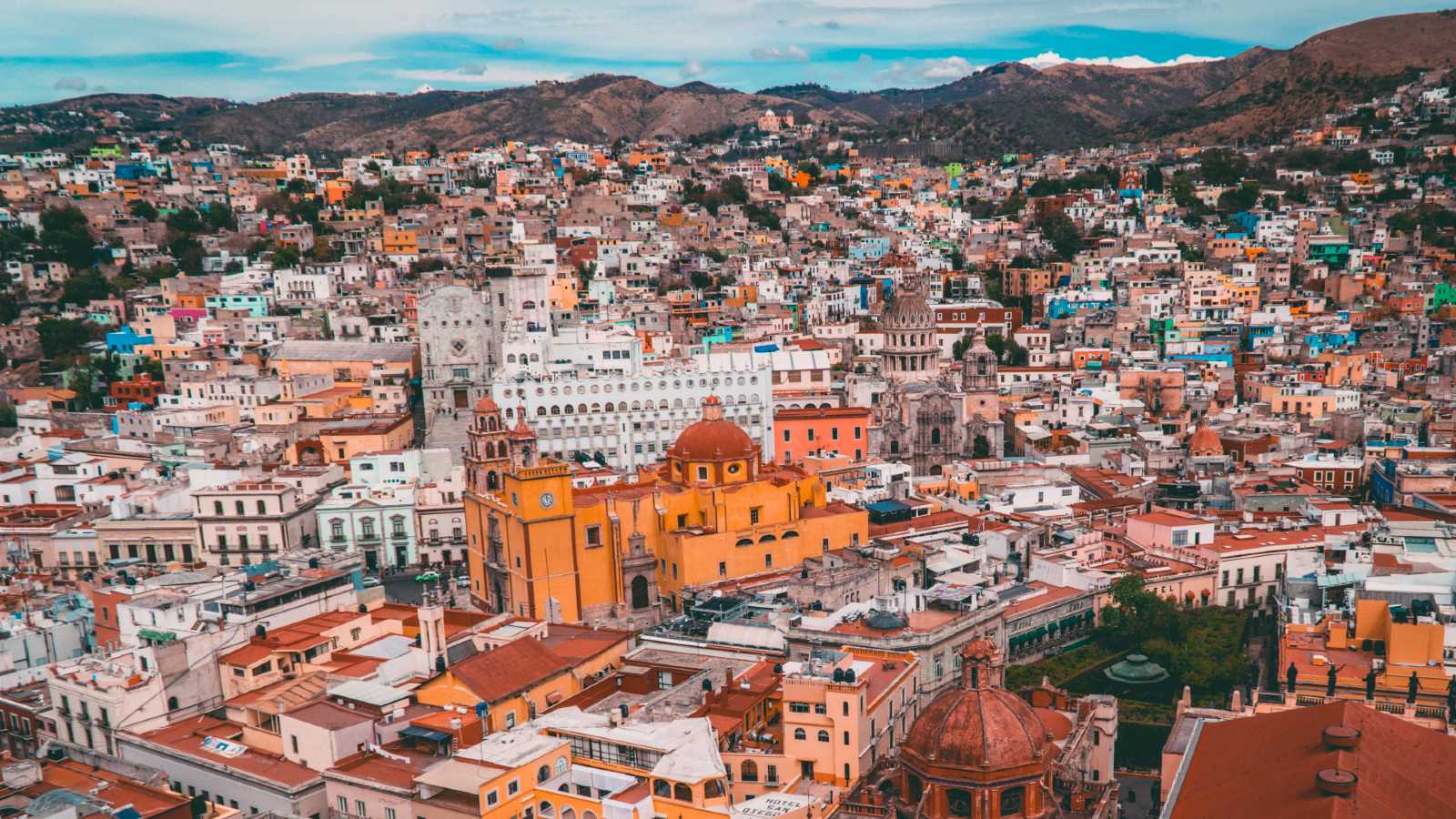
Around one million Americans live in Mexico, settled in cities like Mexico City, Queretaro, and Monterrey. They’re attracted to the lower cost of living, good weather and relaxed lifestyle, whilst still being close enough to the US to visit friends and family (or, just as likely, to host the family that want to come visit).
Visa requirements: If you want to move to Mexico temporarily from the US, its temporary visa (a “residente temporal” permit) enables you to remain in Mexico for up to four years. Mexico’s permanent resident visa (“visa de residente permanente”) is available for US citizens who meet the requirements and wish to move there long-term.
The financial requirements for the permanent visa are based on Mexico’s 2022 daily minimum wage, and retirees will need to provide proof of a monthly income of $4,300-$4,500 over the last six months or a savings balance of $180,000 over the last 12 months.
Healthcare: Mexico is already a well-established medical tourism destination for US citizens, and the country has both public and private healthcare available. The two forms of public health insurance are the Instituto de Salud para el Bienestar (INSABI) and the Instituto Mexicano del Seguro Social (IMSS).
Retired expats that aren’t working can apply to join the IMSS for public coverage, but be aware that the process is conducted in Spanish. Many expats also opt for private health insurance to avail of shorter wait times and better facilities.
Weather and climate: Mexico has a generally tropical and warm climate with little variation between the seasons. Mountainous regions will experience lower temperatures and humidity.
Cost of living: While your cost of living during your retirement in Mexico will vary depending on your lifestyle choices, you can rent a one-bedroom apartment in the city center for anything from $220.73 to $882.94 per month, and the estimated monthly costs for one person are $480.17. Its overall cost of living is 58.71% lower than in the US.
1. Retiring to Costa Rica from the US
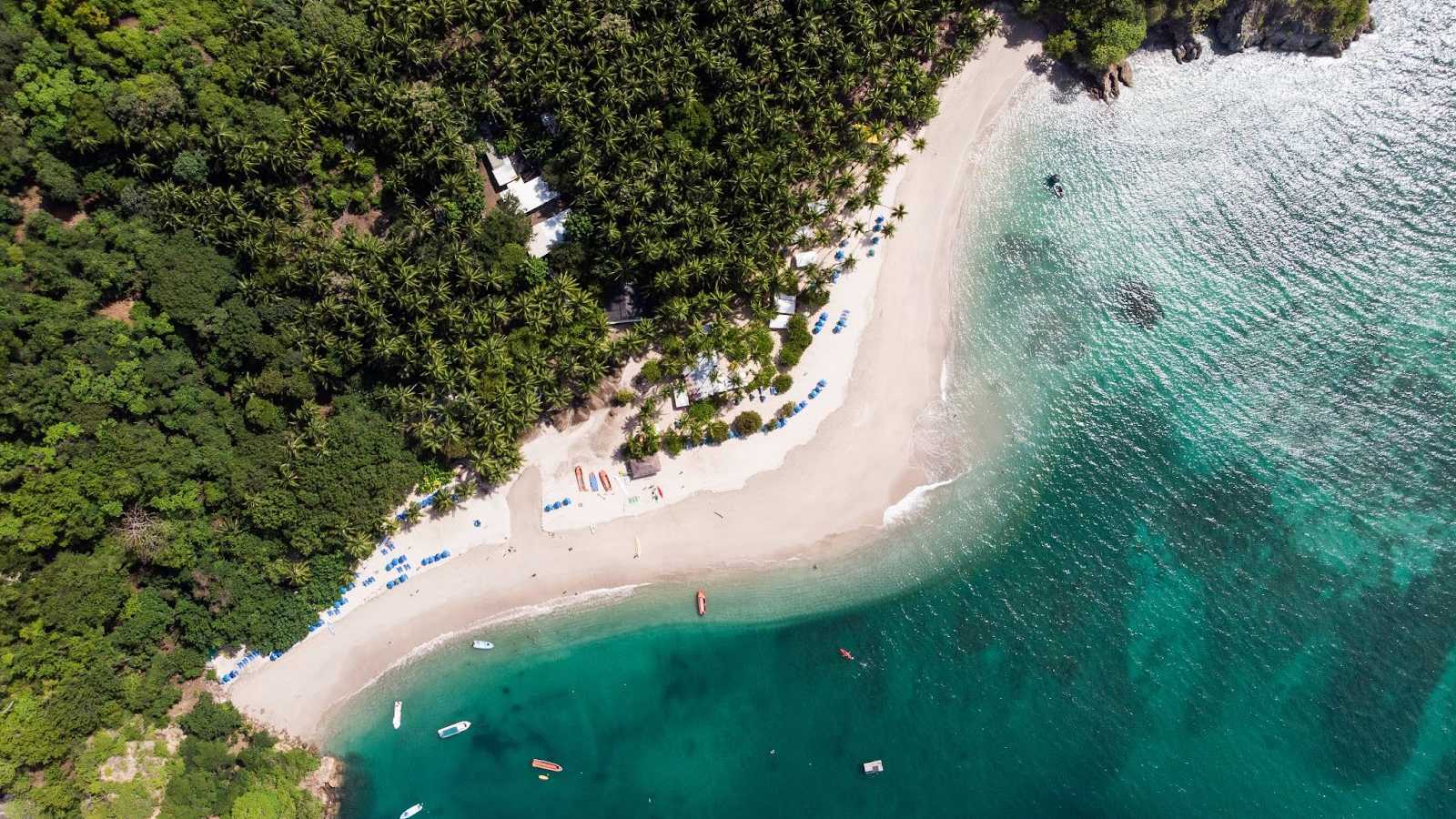
A retirement close to sandy beaches in a tropical paradise is a dream for many, and with two major airports it’s nice to know that your roots are just a few hours away by plane. National parks, rainforests and volcanoes are all easily accessible in Costa Rica too, so you needn’t spend your days glued to a deck chair.
Visa requirements: US citizens have their pick of a few different options to choose from for long-term residency in Costa Rica. The financial requirements for the “pensionado program” are at least $1,000 a month in income, whether that’s through a pension, dividends, or other forms of savings and income.
The “rentista program” is for applicants without a fixed retirement income and requires proof of a $2,500 monthly income for at least two years or a $60,000 deposit in a Costa Rican bank.
You can also become a resident through the “inversonista” program by investing at least $200,000 in Costa Rica.
Healthcare: While Costa Rica has both public and private healthcare, public healthcare is only free for Costa Rican citizens most in need. As US retirees need to be able to prove proof of income and means, they generally have to pay into the “Caja Costarricense de Seguro Social” (CCSS) to access public healthcare.
The amount you pay will be based on the amount you declared when applying for your visa. However, as with many public health services, you can experience long wait lists for services and many expats opt for private health insurance.
Weather and climate: Costa Rica is tropical year-round, with the average maximum temperature lying around 86°F.
Cost of living: Beside the beautiful beaches, one of the main benefits of living in Costa Rica is the low cost of living. According to Numbeo, one person’s estimated monthly costs in Colombia would be $616.80 without rent. The monthly rent for a one-bedroom apartment varies from just $194.55 to $1,004.57 depending on if you want to settle in the city or outside it, and the country’s cost of living overall is 49.77% lower than that of the US.
How to save on your overseas retirement costs with CurrencyFair
CurrencyFair offers secure money transfers to over 150 countries and over 22 currencies. If you plan to retire abroad, CurrencyFair lets you send and receive money around the world, saving you money when it’s time to transfer your pension or purchase property abroad.
You can choose to send money immediately with quick, low-cost money transfers, or set your own rate on our marketplace, and wait for the market to meet it — meaning you could even beat the currency market rate that you see online when you need to send money abroad. And our world-class customer experience team is available to offer support when you need it.
Sign up today for fast, secure money transfers and send money overseas at better exchange rates, with no hidden fees.
This information is correct as of July 2022 This information is not to be relied on in making a decision with regard to an investment. We strongly recommend that you obtain independent financial advice before making any form of investment or significant financial transaction. This article is purely for general information purposes. Photos by Nils Nedel, Evan Krause, Pedro Slinger, Atanas Malamov, Dennis Schrader, Nick Karvounis, Leandro Loureiro, Anthony DELANOIX, CALIN STAN, Patrick Baum, Michael Lämmli and Jeevan Jose on Unsplash.





